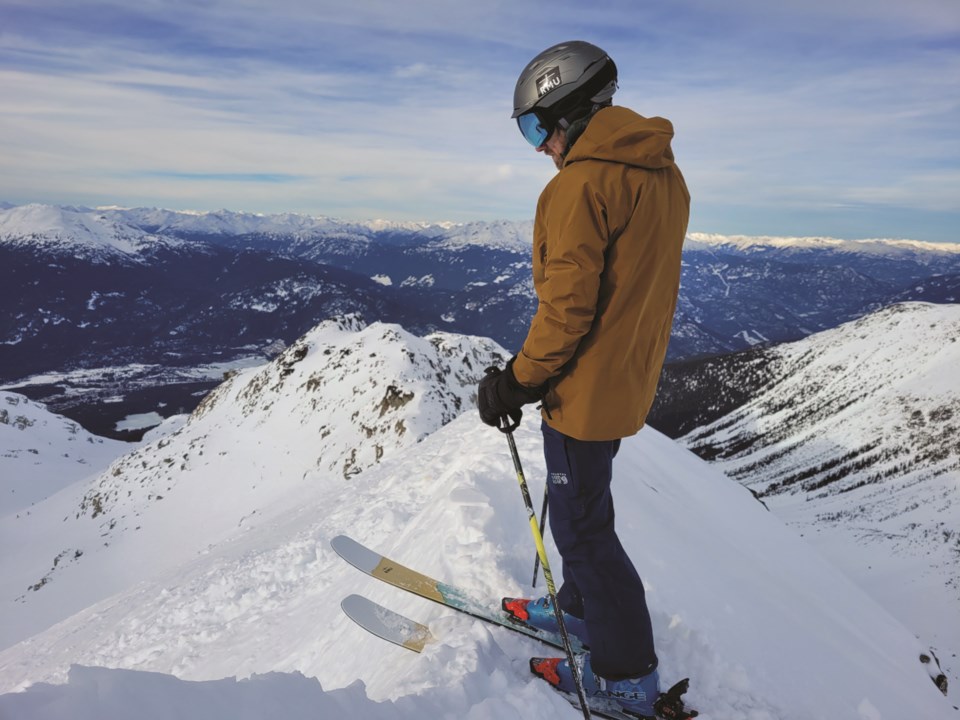It was a couple of years ago while riding Chair 5 at Mount Baker that I witnessed a brief but beautiful expression of skiing. And no, it wasn’t the typical powder-slaying, cliff-hucking, road-gapping, stompy smoothness that you would normally associate with Mount Baker’s talented locals. This man was skiing a groomer on the verge of non-control, goggle gap an inch wide, tattered jacket fully undone and flapping in the breeze, his mouth open in awe of his own speed.
Awesome.
Witnessing such a display would no doubt send a lot of core skiers straight to their phone camera for a crack at making the share on @jerryoftheday. But I chose instead to take in that moment and reflect—could this be the soul of skiing right here? When you scrape off all superficial fashion, attitude and one-upmanship stories at après, you get a glimpse into what skiing is actually like for people. And you can find it at any number of mom-and-pop hills around North America, at least those that have survived poor snow years and corporate absorption.
The decades-long locals in Whistler could wax poetic about the days when the soul of skiing lived here, and while I believed it did for many years, the reality is, our resort was founded on an Olympic dream, one that took almost 50 years to realize. Faded neon one-pieces were always going to have to make way for shiny Bogner puffies by the time the five rings came to town.
While luxury brands of ski wear tend to be the outerwear of the one-percenters, the rank and file skier or snowboarder in Whistler still puts a lot of stock in how they appear on the mountain; jackets, pants and gloves that coordinate, seamless helmet-goggle integration, mid-layers that look striking on the après patio.
Ahh, but real skiers and riders know how to shop for function AND mountain fashion, right? Enter the high-end Gore-Tex garments, where for a small fortune, you can have one of the highest-performing (and arguably one of the better looking) jackets on the mountain. I do believe these purchases have their merits, not on the grounds of their colour palettes, number of pockets or dead bird logos, but for their durability. If you’re still rocking a jacket 10 years later that’s had umpteen waterproof treatments and a couple of manufacturer repairs, you’ll know what I’m talking about.
I’ve bounced around various brands over the years once I realized my need for durable and reliably waterproof outerwear to make it through a wet Whistler winter. A seven-year-old Arc’teryx Alpha SV still accompanies me into the backcountry and probably will for a few more years, or until it suffers irreparable damage. My Patagonia PowSlayer pants aren’t nearly that old so I expect them to serve for a similarly long tenure. These garments are built for backcountry breathability and versatility, and while they work just fine for skiing the resort, there are a few features that a more resort-geared ski suit could provide, especially as I start to prioritize comfort for my on-hill ski days.
The answer came this winter when I tried the Mountain Hardwear Boundary Ridge jacket and bib pants. I still have an old pair of Mountain Hardwear Gore-Tex bib pants from about 2009 (which I finally wore holes in) that I now use for snow clearing around the house and other such laborious duties. So I already had some experience with the brand and could trust the durability of their Gore-Tex garments. The key differences with this kit that I’ve really come to appreciate are how much more comfortable this full bib is thanks to four-way stretch fabric in the chest and back areas. I also feel much warmer in this suit compared to my backcountry kit, for which I credit the backing fabric lining the jacket and pants. On the full technical Gore-Tex Pro garments (like my aforementioned Arc’teryx and Patagonia pieces) the backing fabric is a smooth surface built for the best breathability and ease of movement when skinning and bootpacking. The Boundary Ridge kit comes with something they call “Lo Loft Brushed Back Construction,” which sort of feels like a very light carpet. While sacrificing some breathability, I felt much warmer and wind-resistant when attempting a couple of those -30 C ski days we experienced during the arctic outflow. The Lo Loft fabric does come with more friction, so I wouldn’t want it on for a four-hour approach on the skin track up Wedge or anything. But for hitting the Spanky’s boot pack and First Tracks Husume, the comfort trumps function in this case.
We all have to find the gear that works best for us with fit and function. I’d give style a distant third priority, but that’s just me being practical. On the other end of the spectrum, you have Veilance (a high-end urban fashion sub brand of Arc’teryx) selling a waterproof tote bag made from Gore-Tex offcuts for $200. I don’t expect to see any of those kicking around the Village Stroll any time soon, but it’s a sign that— for better or worse—fashion trends are alive and well in the ski business.
Vince Shuley received no compensation for his opinions in this article, and that’s the way he likes it. For questions, comments or suggestions for The Outsider email [email protected] or Instagram @whis_vince.




